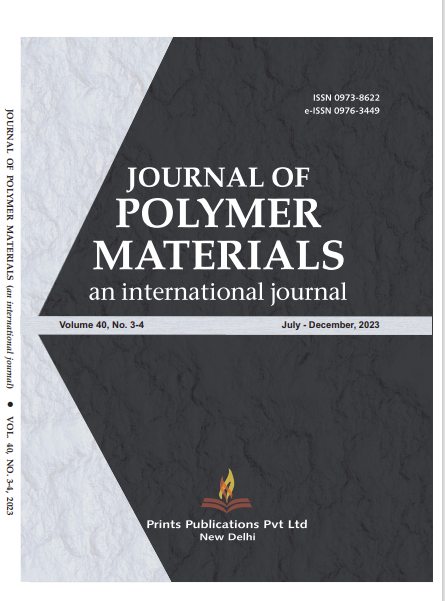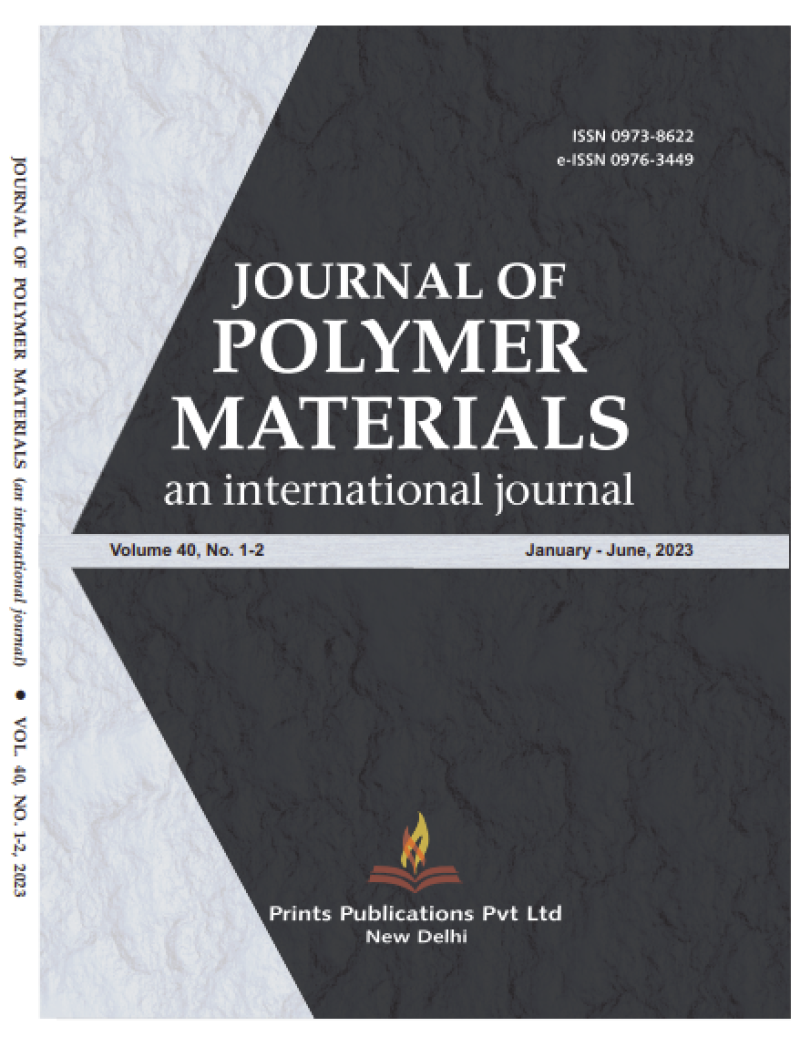Journal of Polymer Materials : An International Journal
Current Volume: 40 (2023 )
ISSN: 0973-8622
e-ISSN: 0976-3449
Periodicity: Quarterly
Month(s) of Publication: March, June, September & December
Subject: Chemistry
DOI: 10.32381/JPM
Green Synthesis of Reduced Graphene Oxide Nanosheet by using L-ascorbic Acid and Study of its Cytotoxicity on Human Cervical Cancer Cell Line
By : Prabhat Kumar, Anjana Sarkar, Purnima Jain
Page No: 121-135
Abstract
Biocompatible graphene derivative materials (GBMs) to harness the maximum potential of pristine graphene biologically, is the most important strategy for its advanced applications in pharmaceutical and other biomedical fields. Currently, scientists are trying to find this by using biopolymer nanocomposites or anchored materials. Nevertheless, tuning the bare GBMs towards biocompatibility is a beautiful approach to exploit the fundamental potential of pristine graphene vis-à-vis suppressing the effects of incorporated biopolymers or anchored materials. Herein, a large-scale, cost-effective, facile, and environment-friendly green synthetic strategy is used for the synthesis of reduced graphene oxide (rGO) nanosheet using L-ascorbic acid (L-AA) as a reducing/stabilizing/capping agent. The as-synthesized rGO was characterized by XRD, Raman spectroscopy, TEM, and in-vitro cell cytotoxicity through SiHa (human cervical cancer) cell line. Results showed that nanosheet of rGO was synthesized successfully and the order of cell viability on SiHa cell line was found to be rGO ascorbic acid> GO > rGOhydrazine. The reason behind such viability order may be surface oxidation state, carbon content, and presence of reducing/ surfactant/capping agent along with graphene. The studies described can be further optimized to be used in neural tissue engineering, regenerative medicines, biosensors, drug delivery, and gene delivery therapy, to name a few.
Authors :
Prabhat Kumar
Department of Chemistry, Netaji Subhas University of Technology, New Delhi, India.
Anjana Sarkar
Department of Chemistry, Netaji Subhas University of Technology, New Delhi, India.
Purnima Jain
Department of Chemistry, Netaji Subhas University of Technology, New Delhi, India.
DOI: https://doi.org/10.32381/JPM.2022.39.1-2.8



